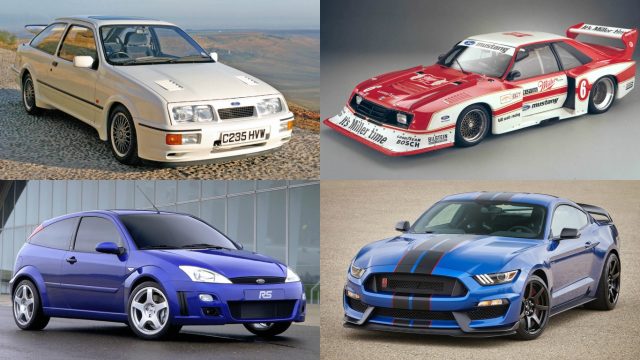 Everyone loves a fast Ford, but who makes the greatest performance cars to wear the Blue Oval badge? Over fourteen rounds, we’ve paired up rivals from both sides of the pond. Here, they go head-to-head here in a performance face-off spanning more than five decades.
Everyone loves a fast Ford, but who makes the greatest performance cars to wear the Blue Oval badge? Over fourteen rounds, we’ve paired up rivals from both sides of the pond. Here, they go head-to-head here in a performance face-off spanning more than five decades.
Ford Performance line-up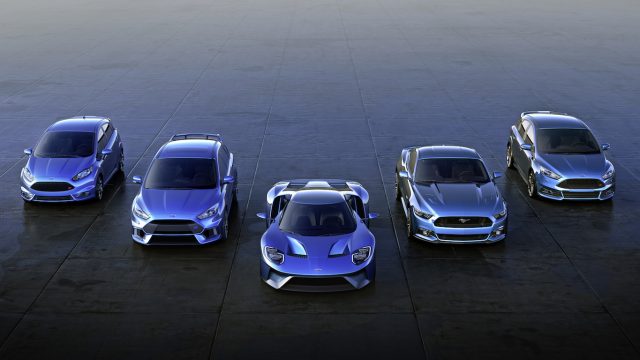
Today, Ford Performance is a global brand responsible for producing fast cars. Created from the previous teams developing cars for specific territories, Ford now wants all key markets to have access to the same performance vehicles. So, from the Fiesta ST to the latest Ford GT, there is no reason why the country you live in should deny you access to the good stuff. However, that hasn’t always been the case.
- Racing in the blood: the story of the Ford GT40
- We reunite Ford Lotus Cortina TV star with its owner after 40 years
- Made in Dagenham: Ford’s secret classic car collection
Round 1: 1960’s Road Racers – 1963 Lotus Cortina.
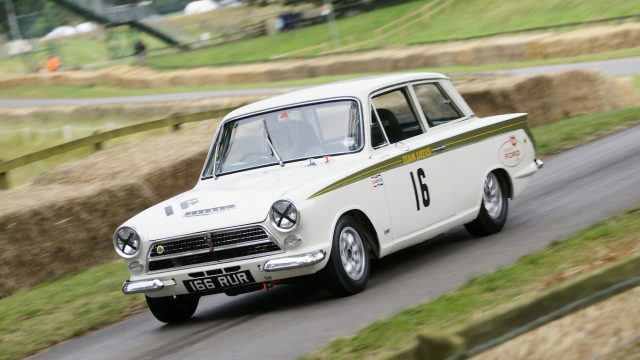
Let’s start with arguably the first real fast Ford produced in Britain, in the shape of the Lotus Cortina. A twin-cam 1.6-litre engine with just 105hp might not sound much today, but light aluminium panels kept weight down to just 850kg. This translated into motorsport success, with the Lotus Cortina taking wins in numerous touring car classes. Jim Clark picked up the 1964 British Saloon Car Championship behind the wheel of a Lotus Cortina, while still competing in Formula 1.
Round 1: 1960’s Road Racers – 1964 Fairlane Thunderbolt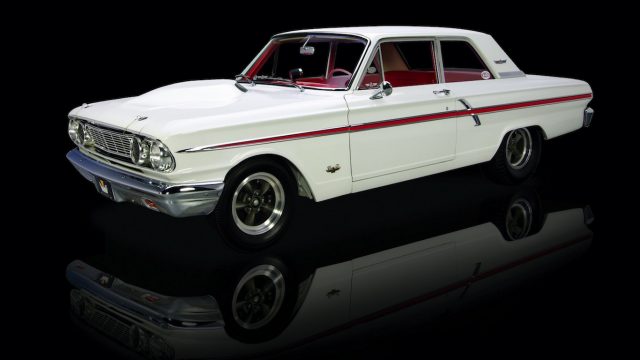
Much like the Lotus Cortina, the American Fairlane Thunderbolt was built with racing in mind. Just 100 examples were created to homologate the car for drag racing, with the same 426 cubic inch (7.0-litre) V8 engine used in NASCAR racers. Officially rated at 425hp, but estimated to be far more powerful, this engine – combined with fibreglass body panels and a stripped-out interior – made the Thunderbolt a devastating road car.
Round 2: Blue-Collar Coupes – 1965 Mk1 Mustang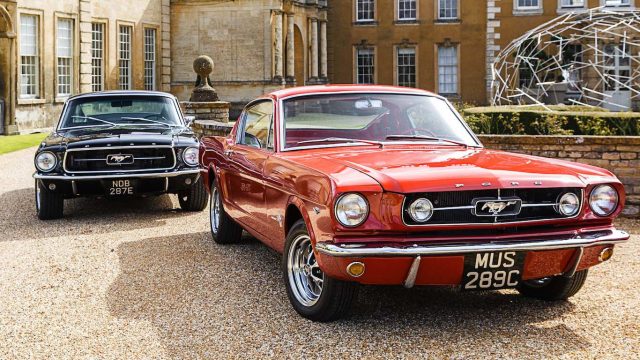
Developed to appeal to both men and women, the original Mustang took 22,000 orders on the first day it was unveiled at the 1964 World’s Fair. It also created the ’pony car’ segment, which spawned new rivals from Dodge and Chevrolet. A 271hp 289 cubic inch (4.7-litre) V8 made for the fastest early Mustang, until more power was added in later years. Several generations later, the original Mustang still holds just as much appeal as it did then.
Round 2: Blue-Collar Coupes – 1969 Mk1 Capri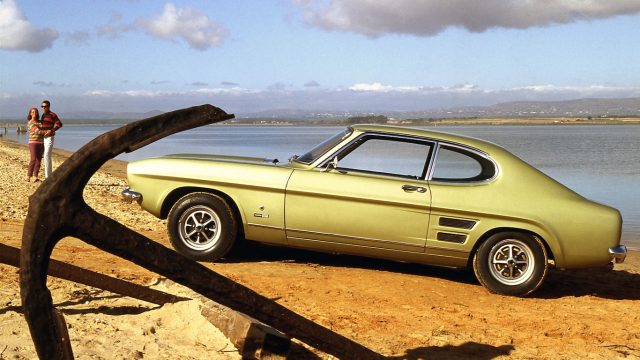
Famously advertised as ‘the car you’ve always promised yourself’ the Capri brought the idea of ‘grand touring’ to the working man. Unashamedly intended as the European version of the Mustang, and even styled by the same person, this was the pony car in miniature. With rear-wheel drive and a range of engines from tepid 1.3-litre inline-four to potent 3.0-litre V6, there was a Capri for everyone. Later Capris were largely ignored by European markets, but it remained a part of British culture until 1986.
Round 3: Competitive Spirit – 1970 Mk1 Escort RS1600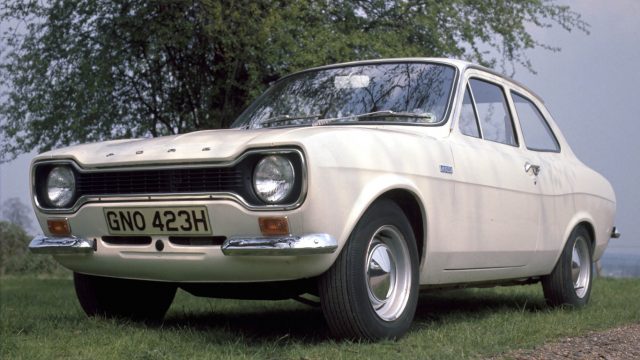
Starting a performance lineage that’s still going strong today, the first British Ford to wear the RS badge was the RS1600 Escort. Built to go rallying, the initial RS1600 models were little more than homologation specials, with a 1.6-litre Cosworth-BDA engine that revved to 6,500rpm. The later Mexico version, made in honour of Ford winning the 1970 London to Mexico Rally, was still desirable but better suited to street use. Today, any Mk1 Escort is likely to be worth big money, and the RS1600 and Mexico models have a legendary reputation.
Round 3: Competitive Spirit – 1970 Boss 302 Mustang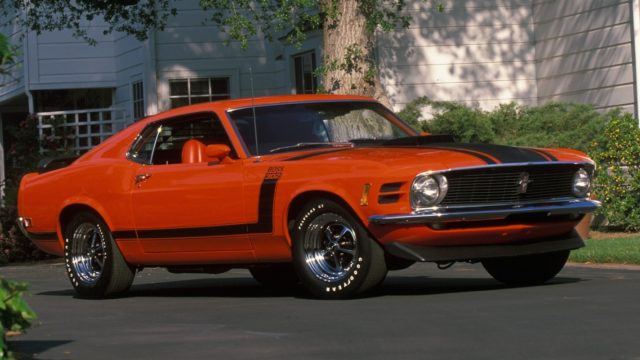
Across the Atlantic, Detroit was creating a version of the Mustang to go racing in the SCCA Trans-Am series. First introduced in 1969, the Boss 302 used – as you may have guessed – a 302 cubic inch (5.0-litre) V8 engine with 290hp, connected to a four-speed manual gearbox. In 1970, it took victory in the Trans-Am series, with the Boss 302 claiming six wins from 11 rounds, during an extremely competitive season.
Round 4: Wide and Wild – 1981 Zakspeed Capri Turbo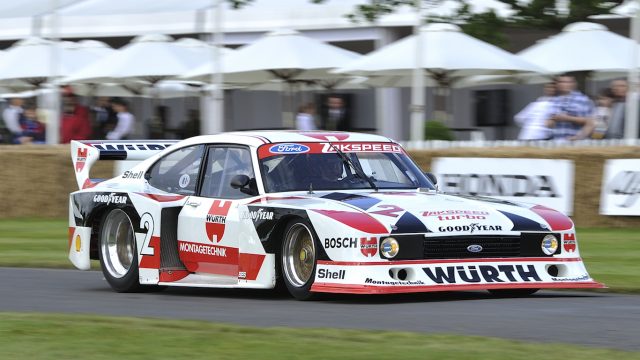
This may look, vaguely, like a Mk3 Ford Capri, but the Zakspeed version was built to meet FIA Group 5 regulations. Only the doors, bonnet and roof had to be kept standard, resulting in the ultra-wide stance. Klaus Ludwig would drive the Zakspeed-entered car in the 1981 Deutsche Rennsport Meistershaft, taking titles for both himself and the team. Power came from a turbocharged 1.4-litre engine, producing around 500hp.
Round 4: Wide and Wild – 1981 Zakspeed Roush Mustang Turbo
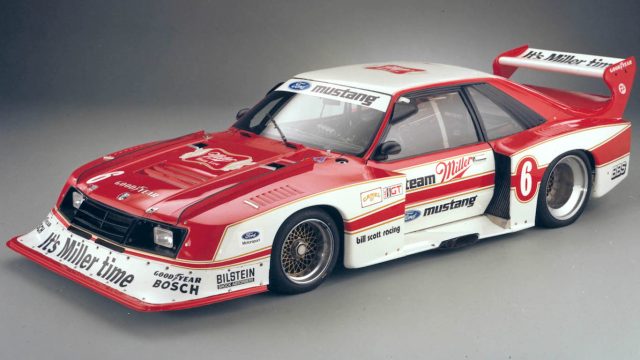
No, you’re not seeing double. This isn’t the Capri again, we promise. This is the 1981 Mustang Turbo, also built by Zakspeed and entered in the GTX Class of the IMSA Camel GT Championship. Featuring a certain Klaus Ludwig as one of the drivers, the Zakspeed team was contracted to build a Group Five race car for Ford’s Special Vehicle Operations. However, the Mustang Turbo was unable to match the success of the Capri, and was replaced with a new GTP-class car in 1983.
Round 5: Homologation Heroes – 1984 RS200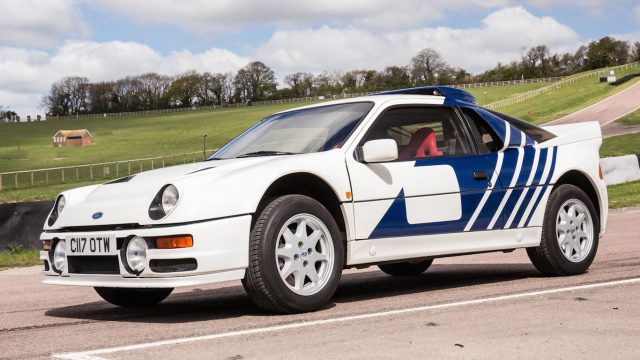
Group B was the pinnacle of rallying, with crazy horsepower and exotic materials used to create the ultimate competition cars. Four-wheel drive and a mid-mounted 1.8-litre turbo engine producing up to 450hp in rally trim helped make the RS200 competitive. Just 200 road cars were built to homologate the racer, but all this was ultimately in vain. A crash involving an RS200 on the 1986 Rally de Portugal would contribute to the outlawing of Group B cars for the following season.
Round 5: Homologation Heroes – 1969 Torino Talladega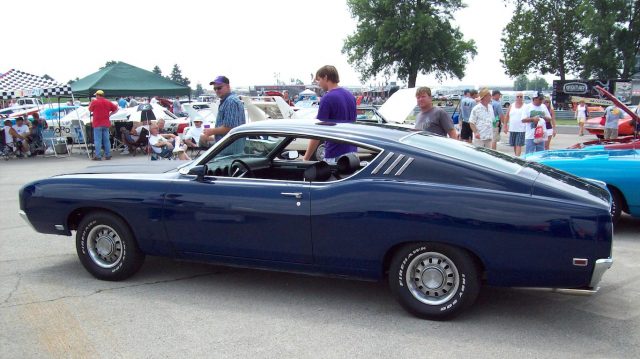
Just as the RS200 pushed Group B regulations to the extreme, Ford had been doing the same decades earlier in NASCAR. Featuring a special aerodynamic front grille and sloping fastback roof, the Torino Talladega was made to hit high speeds on banked ovals. Although it might not have the same fearsome reputation as the RS200, it was successful in taking the 1969 manufacturers’ championship. Special ‘aero warriors’ like the Talladega were later removed from NASCAR due to changes in homologation requirements.
Round 6: Tin Top Legends – 1986 Sierra RS Cosworth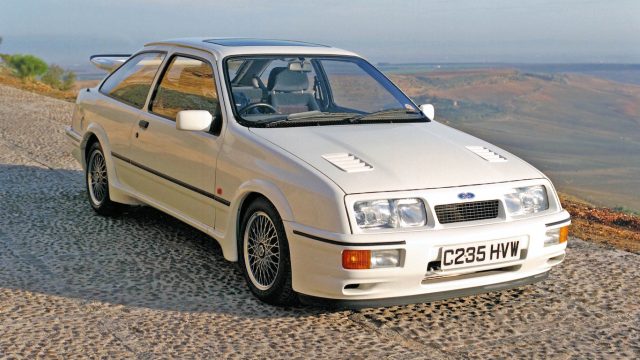
Ford is often single-minded when pursuing motorsport victory, and the Sierra RS Cosworth was the product of its quest for FIA Group A domination. Taking 15 major Touring Car championships cemented its on-track ability, while a reputation for being the ultimate prize for joy-riders ensured the road car was just as revered. More than 5,000 examples were built, combining rear-wheel drive with a 204hp 2.0-litre turbocharged engine. Oh, and there’s that iconic ‘whale tail’ spoiler, too.
Round 6: Tin Top Legends – 1985 Merkur XR4Ti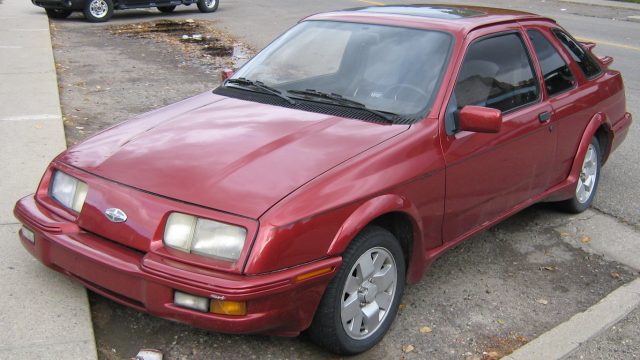
North American buyers couldn’t buy the Sierra Cosworth, but they did get the XR4Ti. Sold under the short-lived Merkur brand, this was an XR4i Sierra, but with the European 2.8-litre V6 ditched in favour of a 175hp 2.3-litre turbocharged four-cylinder engine. Around 42,000 examples were built between 1985 and 1989, but today the XR4Ti is often forgotten. Andy Rouse drove a Merkur XR4Ti to victory in the 1985 British Touring Car Championship, paving the way for the later Sierra RS Cosworth.
Round 7: Boosted Blue Ovals – 1984 Escort RS Turbo Series I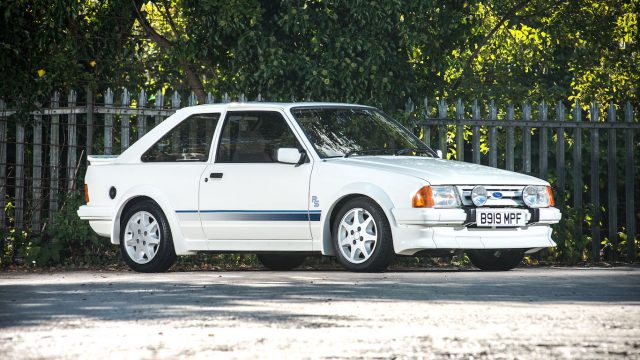
The third-generation Escort marked a huge change from the previous two. Ditching rear-wheel drive in favour of sending power to the front wheels was radical, as was the adoption of a hatchback body. Natural aspiration was out for the fastest Escort, with turbocharging the ‘must have’ of the 1980s. The RS Turbo was endowed with a 1.6-litre engine, making 135hp. Values today have skyrocketed, with prices of around £30,000 not uncommon for restored Series 1 cars.
Round 7: Boosted Blue Ovals – 1984 Mustang SVO Turbo
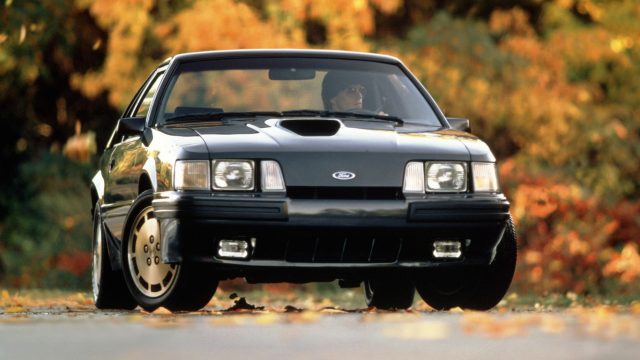
Just as revolutionary as the Mk3 Escort was in Europe, the third-generation Mustang was also a shock to the system. A modern, aerodynamically-shaped body marked a new Ford design era (a switch to front-wheel drive was even considered). The ‘Fox body’ Mustangs remained rear-wheel drive, but did gain turbocharged engines, predating the current Ecoboost ’Stang by some three decades. The SVO Turbo version was the most potent, with up to 205hp from its 2.3-litre four-cylinder motor, a limited-slip differential and adjustable Koni suspension.
Round 8: Street Sleepers – 1996 Taurus SHO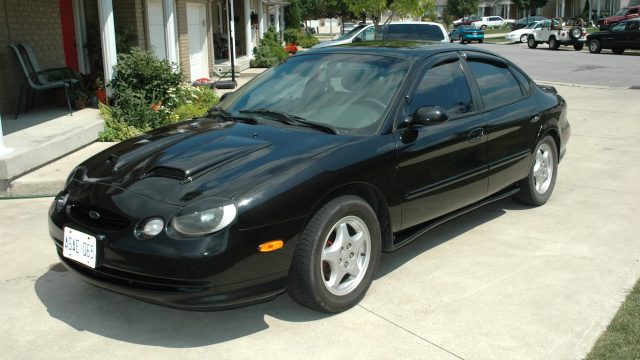
Standing for Super High Output, the SHO was the performance variant of the Taurus saloon. Perhaps to offset the shock caused by the styling of the third-generation Taurus, Ford upped things for the SHO by adding a V8 engine instead of the previous V6 unit. Developed by Yamaha, the 3.6-litre motor made 235hp and 230lb ft, with 32 valves and aluminium cylinder heads. The bodywork of the SHO was left largely untouched, masking the performance beneath.
Round 8: Street Sleepers – 1999 Mondeo ST200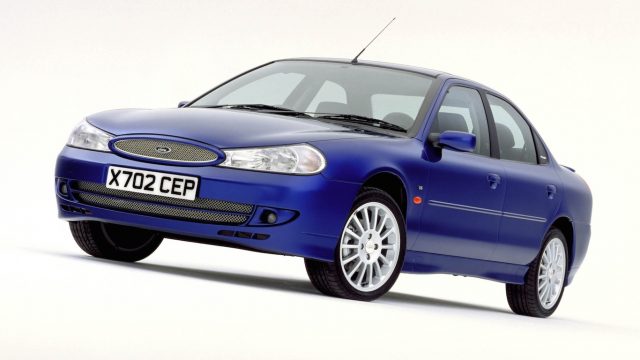
Things were going well for Mondeo Man as the 1990s drew to a close, and the limited edition ST200 version launched in 1999 was as good as it got. The 2.5-litre V6 engine was developed by Ford’s Special Vehicle Team in America, and marked the move towards greater transatlantic cooperation. With 200hp, the result was quick – rather than devastating – performance, but the natural ability of the Mondeo meant it was fun to drive. Today it flies under the radar as a forgotten fast Ford, but it seems primed to become a modern classic.
Round 9: Millennium Coupes – 1999 Ford Racing Puma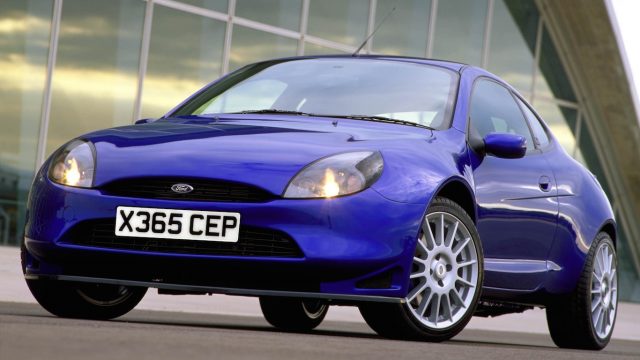
Despite proving popular with the British public, the Ford Puma often came in for criticism for being underpowered. This changed in 1999 with the introduction of the Ford Racing Puma. The existing Yamaha-developed 1.7-litre engine was enhanced to deliver 155hp at 7,000rpm, with 0-62mph taking a frantic 7.9 seconds. But the Racing Puma wasn’t just about straight-line performance. Bigger brakes, wider wheels and uprated suspension meant it stopped and handled well, too. With just 500 built, the FRP is a genuine rarity worth seeking out.
Round 9: Millennium Coupes – 1999 Mercury Cougar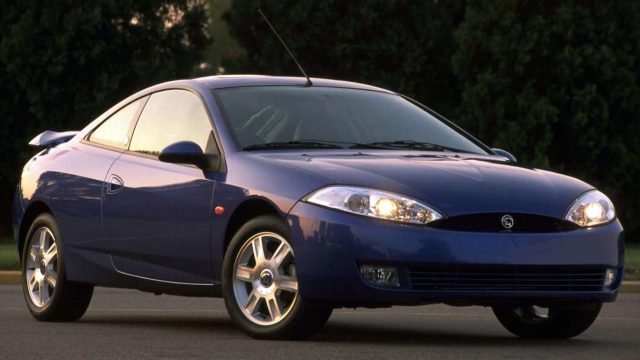
The original Mercury Cougar was an upmarket version of the first-generation Ford Mustang. This eighth-generation Cougar, launched in 1999, shared a platform with the Mondeo, and never quite managed to deliver the excitement promised by its bold ‘New Edge’ looks. Sold in Europe under the Ford badge, a 2.5-litre V6 with 170hp was as good as it got. Slow sales meant the Cougar was canned in 2002, less than four years after being introduced.
Round 10: Peak Performance – 2000 Mustang SVT Cobra R
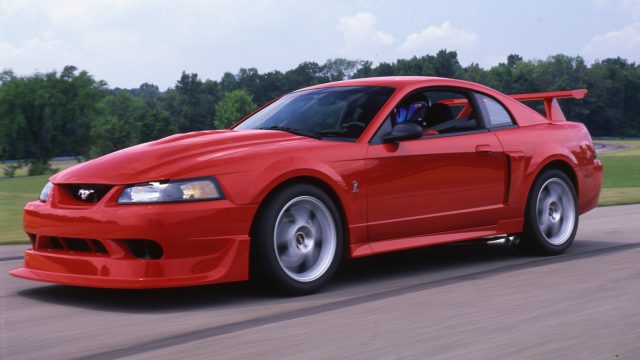
Ford was on a roll with performance products in both the US and UK at the turn of the millennium, but the pressure to do more was ever-present. Enter the ultimate version of the fourth-generation Mustang. Available for just one model-year, and with only 300 examples built, the Cobra R was ultra-fast and ultra-rare. A hand-built 385hp 5.4-litre V8 was fed by a 20-gallon racing fuel cell, and exhaled through a side-exit exhaust. All cars came in Performance Red and featured a gigantic rear wing and adjustable front splitter as standard. The interior was stripped of all luxuries, including the back seats.
Round 10: Peak Performance – 2002 Mk1 Focus RS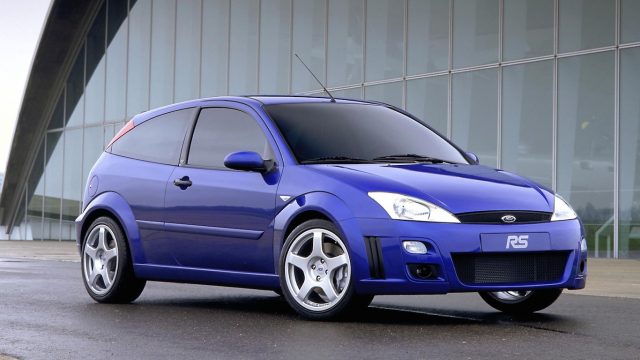
One of the most controversial cars to wear the Rallye Sport badge, the Mk1 Focus RS divided enthusiasts and journalists alike. Most loved the WRC-inspired looks and punchy 212hp 2.0-litre turbo engine. Some were unconvinced by the aftermarket-looking blue interior trim. Yet most divisive was the Quaife torque-biasing differential, used partly due to a lack of 4WD. It made the Focus RS hugely effective on road and track, but also aggressive and physical to drive. A true old-school hot hatch, but one that’s already increasing in value.
Round 11: Transatlantic Special – 2002 Focus ST170
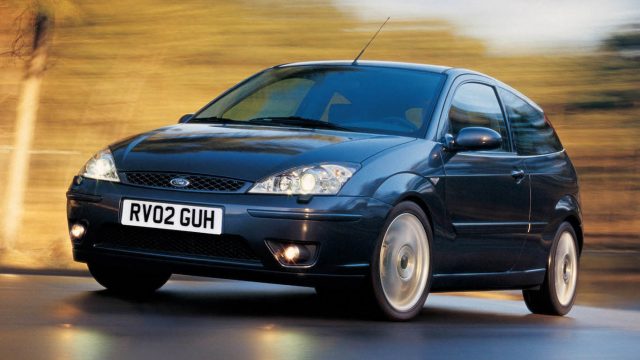
While the RS is most revered first-generation Focus, it wasn’t the only performance version offered. The ST170, also launched in 2002, featured a naturally aspirated 2.0-litre engine developed by Cosworth. With 17-inch multispoke alloy wheels, uprated brakes and Recaro leather seats, it ticked off a number of hot hatch requirements. An estate version was also offered, preceding the current performance wagon craze by over a decade.
Round 11: Transatlantic Special – 2002 Focus SVT
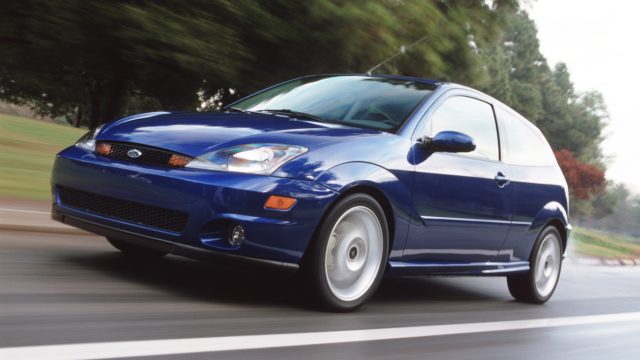
Look familiar? Minor cosmetic changes aside, the 2002 Focus SVT was the same machine as the European-market ST170. A demonstration of Ford’s desire to build ‘world cars’ even when it came to performance variants, the SVT was the result of cooperation between Special Vehicle divisions on both sides of the Atlantic. American buyers even got the option of wild colours like Screaming Yellow and Competition Orange, although they were denied the estate version.
Round 12: Ultimate Utility – 2007 Transit Sport Van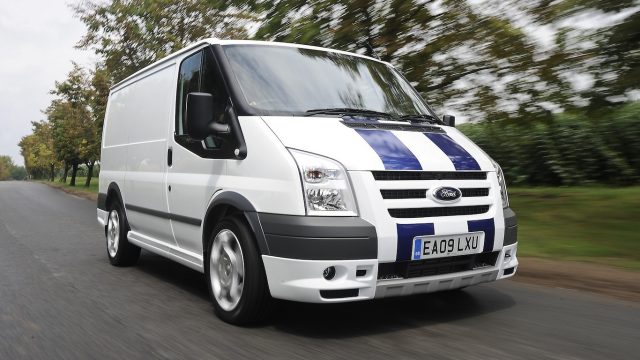
The backbone of Britain. Not just a van, but the van. Driven by everyone from bakers to breakdown services if the adverts from the 1990s were correct. The Transit is a defining commercial vehicle yet, despite its popularity, we’ve never been treated to a performance version. Yes, Ford produced a number of Supervans – laying a Transit body on the chassis of a race car – but they weren’t sold to the public. Instead, in 2007, we got the Sport Van. With a standard 129hp 2.2-litre diesel engine there was no more power, and even the twin exhaust pipes were fake. There were at least bonnet stripes and 18-inch wheels, though.
Round 12: Ultimate Utility – 2010 F-150 SVT Raptor
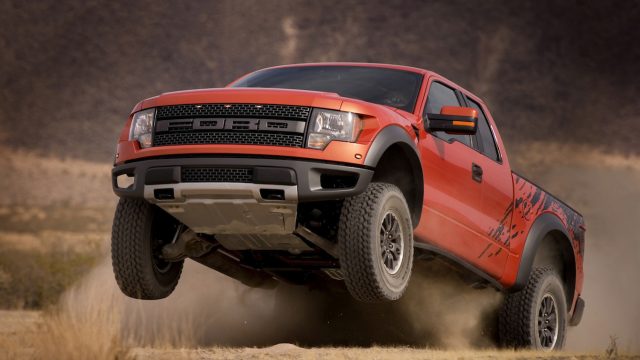
Cross the Atlantic and the F-150 pick-up truck has been the best-selling vehicle in the USA since 1981. Like the Transit in the UK, the F-150 is the mainstay of American life, and the Blue Oval saw fit to create a true performance version in 2010 with the SVT Raptor. With a 6.2-litre V8 producing 411hp and 434lb ft of torque, this was a serious utility vehicle. Despite the potential to terrify people off-road at speed, the Raptor can still tow 3,600kg and carry up to 800kg. Sorry Transit, the Raptor takes this round.
Round 13: Modern Masters – 2016 Mk3 Focus RS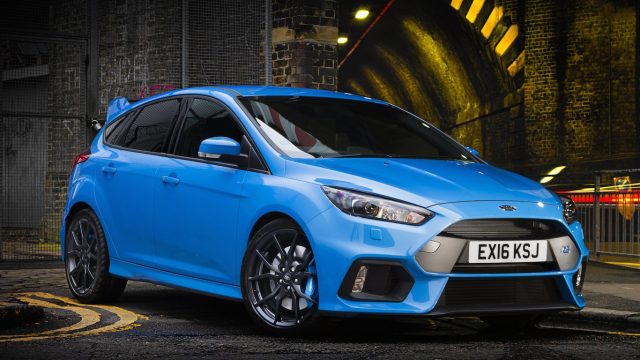
Bringing the North American Ford Special Vehicles Team and European Team RS together in one global Ford Performance brand meant both sides of the Atlantic were involved in the creation of the latest Focus RS. It also meant UK and US buyers got the same 350hp 2.3-litre engine and, finally, a Focus RS with four-wheel drive. With the ability to hit 0-62mph in 4.7 seconds, and run to 165mph, the benefits of global thinking seem pretty clear. There’s also the small matter of that infamous ‘drift mode’…
Round 13: Modern Masters – 2017 Shelby Mustang GT350R
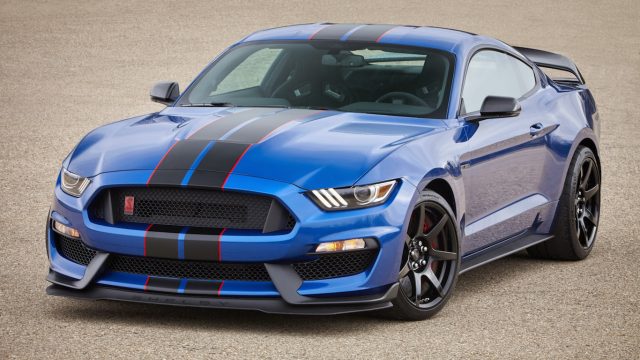
The latest Mustang ticked off a lot of firsts. It’s the first Mustang to have independent rear suspension across the range, the first to be sold globally and, most importantly, the first to be made in right-hand drive. It meant UK buyers have the ability to own and drive a 5.0-litre V8 (or 2.3-litre turbo) muscle car without the need to sit on the ‘wrong’ side. But it’s not all good news. UK customers are denied the chance to buy the Shelby GT350R, with its 526hp flat-plane-crank 5.2-litre V8 engine, carbon fibre wheels, bespoke bodykit and stripped-out interior. Globalisation can’t give you everything, it seems.
Round 14: Definitive Icons – 1994 Escort RS Cosworth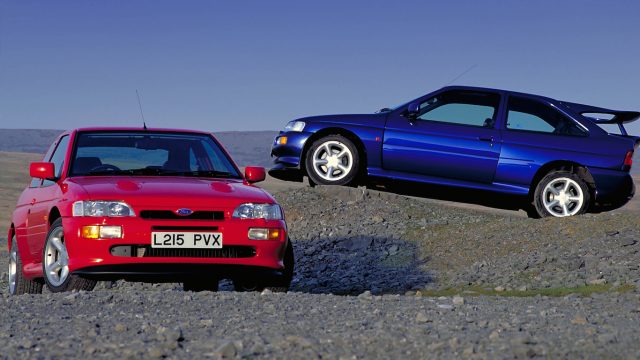
We’ve saved the best until last, picking out the absolute top examples of what Ford can do. Designed and engineered in the UK but built in Germany, the Escort RS Cosworth borrowed a shortened chassis from the Sierra RS, along with the same 2.0-litre turbocharged engine – now making 227hp. The four-wheel-drive system was new, but most obvious was the huge double rear wing that produced substantial amounts of downforce. That this was all wrapped in a body that resembled the regular Escort hatchback, but could hit 60mph in less than six seconds. Jeremy Clarkson bought one from new, and later regretted selling it.
Round 14: Definitive Icons – 1967 Shelby Mustang GT500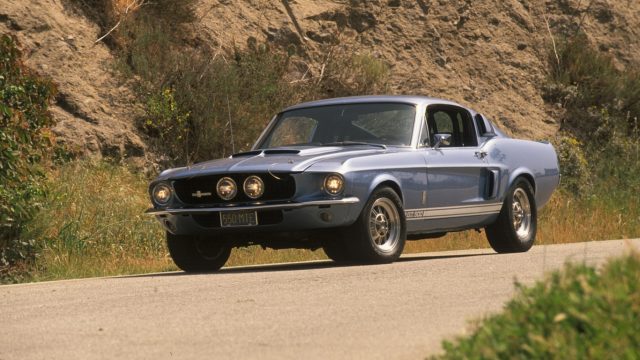
The GT350 may have been the first Shelby Mustang when launched in 1965, but there’s something special about the 1967 GT500 and its big-block 428 cubic inch (7.0-litre) ‘Police Interceptor’ V8 engine. Fitted with twin four-barrel carburettors, it produced 360hp, and had the option of four-speed manual or three-speed automatic gearboxes. Debate rages amongst Mustang enthusiasts as to which is better to drive, GT350 or GT500, but the starring role of the latter in the Gone in 60 Seconds movie cements it as the defining fast American Ford for us.